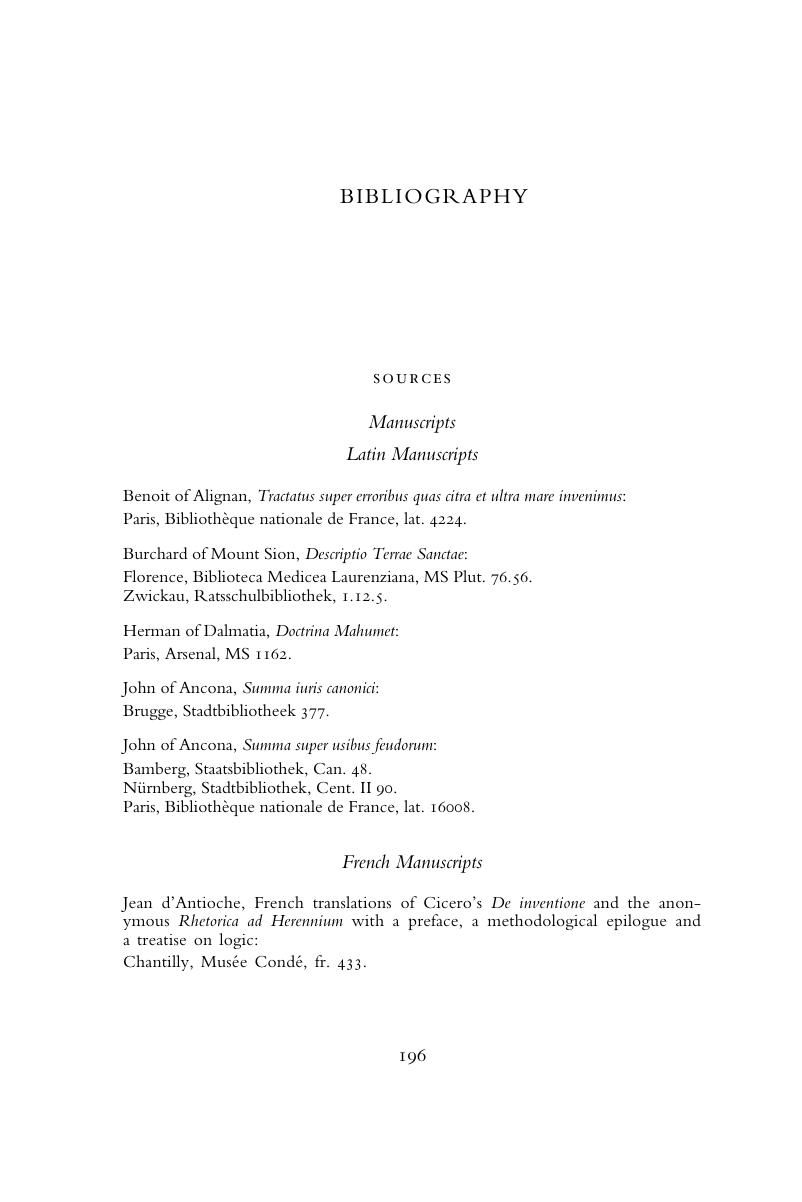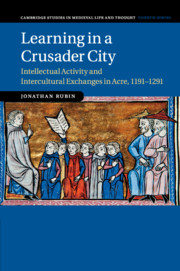Book contents
- Learning in a Crusader City
- Cambridge Studies in Medieval Life and Thought
- Learning in a Crusader City
- Copyright page
- Contents
- Acknowledgements
- Abbreviations
- Introduction
- Chapter 1 Intellectual Activity in Acre
- Chapter 2 Acre’s Christian and Jewish Centres of Teaching and Learning
- Chapter 3 Language and Translation
- Chapter 4 Acre as a Meeting Point of Juridical Traditions
- Chapter 5 The Study of Islam
- Chapter 6 Theological Exchanges with Oriental Christians
- Conclusion
- Appendix: The Relation of the Used Texts to Acre1
- Bibliography
- Index
- References
Bibliography
Published online by Cambridge University Press: 30 August 2018
- Learning in a Crusader City
- Cambridge Studies in Medieval Life and Thought
- Learning in a Crusader City
- Copyright page
- Contents
- Acknowledgements
- Abbreviations
- Introduction
- Chapter 1 Intellectual Activity in Acre
- Chapter 2 Acre’s Christian and Jewish Centres of Teaching and Learning
- Chapter 3 Language and Translation
- Chapter 4 Acre as a Meeting Point of Juridical Traditions
- Chapter 5 The Study of Islam
- Chapter 6 Theological Exchanges with Oriental Christians
- Conclusion
- Appendix: The Relation of the Used Texts to Acre1
- Bibliography
- Index
- References
Summary

- Type
- Chapter
- Information
- Learning in a Crusader CityIntellectual Activity and Intercultural Exchanges in Acre, 1191–1291, pp. 196 - 216Publisher: Cambridge University PressPrint publication year: 2018



